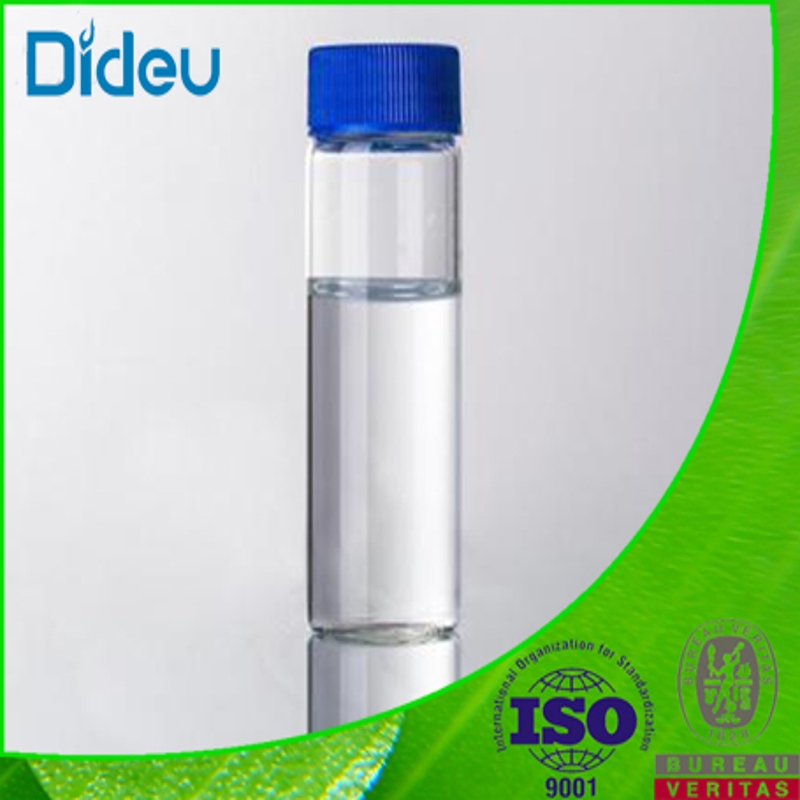-
Categories
-
Pharmaceutical Intermediates
-
Active Pharmaceutical Ingredients
-
Food Additives
- Industrial Coatings
- Agrochemicals
- Dyes and Pigments
- Surfactant
- Flavors and Fragrances
- Chemical Reagents
- Catalyst and Auxiliary
- Natural Products
- Inorganic Chemistry
-
Organic Chemistry
-
Biochemical Engineering
- Analytical Chemistry
-
Cosmetic Ingredient
- Water Treatment Chemical
-
Pharmaceutical Intermediates
Promotion
ECHEMI Mall
Wholesale
Weekly Price
Exhibition
News
-
Trade Service
Four years ago, a small Philadelphia biotech company won FDA approval for the first gene therapy to treat an inherited retinal disease that can lead to blindness, part of a decades-long effort to find ways to correct errors in DNA.
major milestone
.
Since then, many of the world's largest pharmaceutical companies have invested in gene therapy, as well as cell therapy that relies on genetic modification
.
At the same time, dozens of new biotech companies were formed, and scientists made breakthroughs in the science of gene editing, which opened up new therapeutic possibilities
.
But the confidence these advances have brought has also been tempered by safety setbacks and lower-than-expected clinical trial results
.
Heading into 2022, the field's prospects remain bright, but companies face key questions that could determine whether and how soon new genetic medicines reach patients
.
Recently, the foreign biopharmaceutical website Biopharma Dive published an article pointing out that in 2022, the field of gene therapy will face five important problems
.
1.
Will the expected gene therapy approvals boost the field?
Will the expected gene therapy approvals boost the field?
In December 2017, the US FDA approved Spark Therapeutics (acquired by Roche) ophthalmic gene therapy Luxturna for the treatment of an inherited retinal disease (IRD) that can lead to blindness
.
This is the first true gene therapy in the US market, marking the official arrival of the era of gene therapy, and also igniting the enthusiasm of the gene therapy market
.
A year and a half later, Novartis' spinal muscular atrophy (SMA) gene therapy Zolgensma also scored a landmark regulatory win
.
But the agency has not approved any gene therapy since then
.
Gene therapies from BioMarin Pharmaceuticals and Bluebird were unexpectedly denied approval or delayed review
.
That could change in 2022
.
Bluebird Bio's two gene therapies, one for hemophilia B and one for a rare brain disorder, are currently under review by the FDA, with target decision dates in May and June of this year
.
If approved, it would provide relevant manufacturers with important validation and expand the number of patients who have gene therapy as a treatment option
.
In biotech, however, approval is not the end of the road, but a sign of a difficult transition from research to commercial operations
.
2.
Will funds continue to flow in?
Will funds continue to flow in?
A record $20 billion has flowed into gene and cell therapy developers in 2020, significantly surpassing 2018's highs
.
According to the Alliance for Regenerative Medicine (ARM), in 2021, total investment in the industry is even higher, reaching $23 billion
.
About half of the money went to developers specializing in gene therapy, and the other half to developers of cell-based immunotherapies
.
According to ARM, driving this growth was a significant increase in the amount of venture capital, which rose 73% to nearly $10 billion
.
Initial public offerings (IPOs) also helped, with 16 startups raising at least $50 million each in the U.
S.
Heading into 2022, the question for the field is whether these record numbers will continue
.
Overall, biotech tumbled late last year, and many companies' stocks fell amid a broader investment pullback
.
Gene therapy developers have been hit particularly hard, many of which have safety concerns in 2021
.
Also, according to BioPharma Dive, many listed startups have not yet started clinical trials — about half of the 29 gene and cell therapy companies that have IPOs in the past 2 years are in the preclinical stage
.
This can lead to unrealistically high expectations
.
For example, Generation Bio, which raised $200 million in June 2020, has a pipeline of preclinical gene therapies for rare liver and eye diseases
.
However, unexpected findings from animal studies sent the company's stock price plummeting nearly 60% in December
.
Nonetheless, gene and cell therapy is advancing at a rapid pace and the potential is enormous, and may continue to support high levels of investment
.
"I think fundamentally, investment in this area is driven by scientific advances, clinical events and milestones, and I think we'll see that in 2022," ARM CEO Janet Lambert said in an interview
.
3.
How do safety concerns affect FDA regulation?
How do safety concerns affect FDA regulation?
The potential to replace or edit defective genes has been apparent for decades
.
How to do this safely is less certain, and concerns about this have set the field back several times
.
"Safety is the number one risk gene therapy needs to be aware of," RBC Capital Markets analyst Luca Issi said in an interview
.
Researchers have spent years making the technology that underpins gene therapy safer and now have a better understanding of the tools they use
.
But as dozens of companies enter clinical trials, some of them have encountered safety issues, raising key questions for researchers
.
In clinical trials conducted by Audentes Therapeutics and Pfizer (different diseases), patients tragically died from causes that were not fully understood
.
UniQure, Bluebird bio, and most recently, Allogene Therapeutics, have all reported cases of cancer or worrisome genetic abnormalities, leading to studies being suspended and investigated
.
While the gene therapies being tested by the latter three companies were all approved to move forward, the FDA convened an outside panel of experts last fall to review potential safety risks
.
The meeting was welcomed by some in the industry who wanted to work with the FDA to better detail known risks and how to avoid them in testing
.
Ken Mills, CEO of gene therapy developer Regenxbio, said in an interview: “There’s nothing better than getting everyone together to talk about the current difficulties and get the FDA involved
.
And the company will reap the greatest benefits
.
"
Safety concerns and setbacks could recur as more companies conduct more clinical trials
.
As recent meetings and clinical pauses have shown, the FDA appears to be carefully weighing the potential risks to patients
.
It is worth noting, however, that the field is not regressing as it has been in the past, continuing with further research
.
Different technologies and diseases present different risks, which are recognized by regulators, developers and the patient community
.
4.
Will in vivo gene editing take another step forward?
Will in vivo gene editing take another step forward?
Last June, Intellia Therapeutics published early results from a study that provided the first clinical evidence that CRISPR gene editing can be done safely and effectively in vivo
.
These data represent an important milestone in gene editing technology, greatly expanding the possibilities of editing DNA to treat disease
.
But at the same time, a number of important questions remain to be answered, the most important of which are how long the reported effects are likely to last and whether they will drive the enormous clinical benefits that gene editing promises to deliver
.
Intellia Therapeutics will update the study this quarter, which will allow for a better understanding of patients
.
Later this year, the company expects to have preliminary data from another early-stage study of an "in vivo" gene-editing treatment
.
In vivo gene editing is seen as a simpler approach that could play a role in more diseases than treatments that rely on harvesting stem cells from each patient
.
However, since DNA editing is done in vivo, not in the lab, there are also potential risks
.
Areas like the eye that are protected by the body's immune response have become the first common in vivo editing targets for companies like Editas Medicine
.
But Intellia and other companies are targeting other tissues, such as liver, muscle and lungs
.
Later this year, Verve Therapeutics, a company that uses a more precise type of gene editing (base editing), plans to treat the first heart patient in vivo (targeting genes expressed in the liver)
.
"The future of gene editing is in vivo editing," noted RBC analyst Issi
.
That view appears to be shared by Pfizer, which on Monday announced a $300 million research agreement with Beam Therapeutics to find in vivo gene-editing targets in the liver, muscle and central nervous system
.
5.
Will overlapping pipelines force companies to make difficult choices?
Will overlapping pipelines force companies to make difficult choices?
As more cell and gene therapy companies are established, the potential pipeline of treatments is growing rapidly, as is the number of ongoing clinical trials
.
However, many companies are exploring similar approaches for the same diseases, resulting in similar drug pipelines
.
In September 2021, investment bank Piper Sandler released a report that found 21 gene therapy programs for hemophilia A, 19 gene therapy programs for Duchenne muscular dystrophy (DMD), and 18 gene therapy programs for sickle cell.
disease (SCD)
.
In gene editing, Intellia, Editas, Beam and CRISPR Therapeutics are all developing SCD therapies, with CRISPR making the most progress
.
These companies may be forced to make difficult choices as programs move forward and begin to provide more clinical data
.
In a recent note to investors, Stifel analysts wrote: "We believe that as programs move into the clinic and certain rare diseases (especially Fabry and hemophilia) become more intensive, investors need more rigorous scrutiny
.
"
In January, for example, Cambridge, Massachusetts-based Avrobio halted work on a Fabry disease gene therapy that had been its lead candidate until then
.
The decision was prompted by unexpected findings that differed from earlier research findings, but Avrobio also noted that another reason for the decision was "very multiple and challenging regulatory and market dynamics
.
"
Article reference source:
Article reference source:5 questions facing gene therapy in 2022
5 questions facing gene therapy in 2022https://







